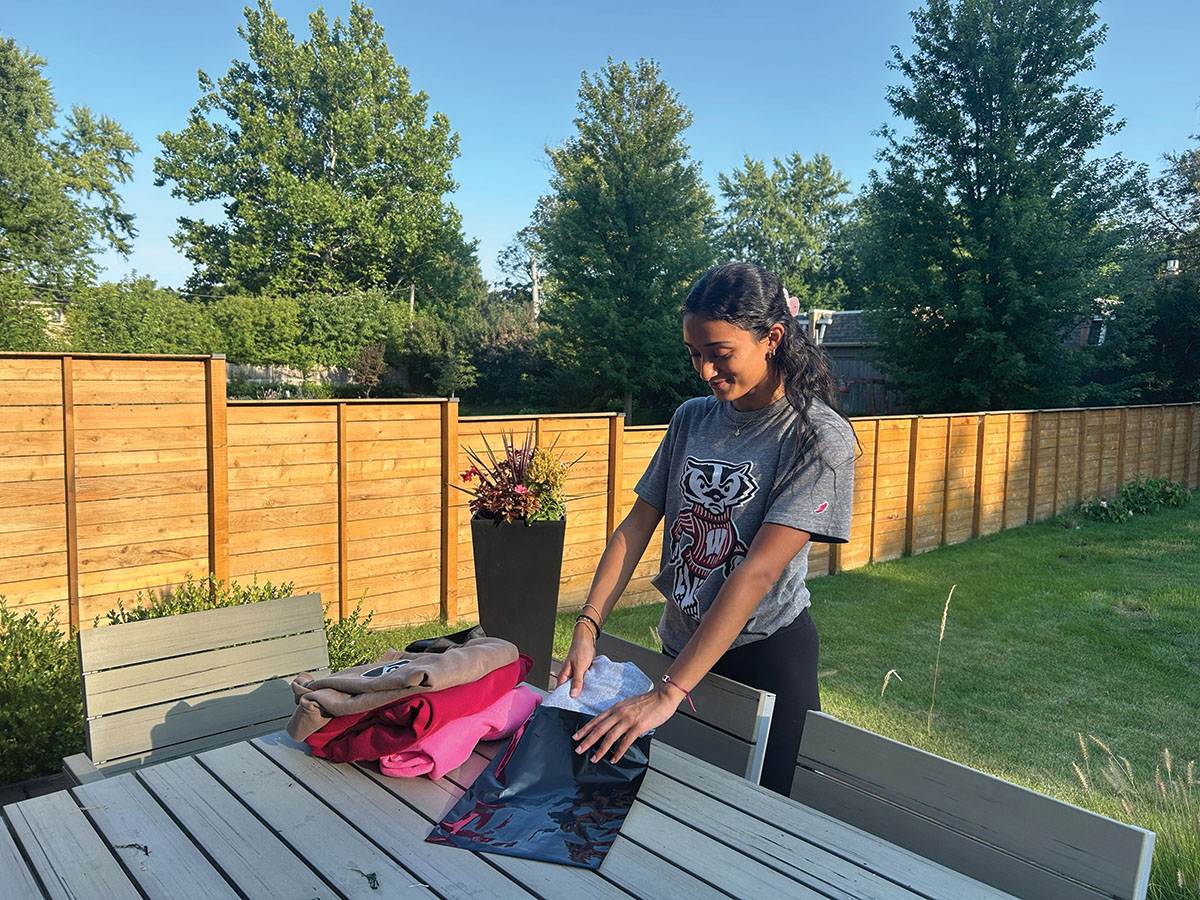Senior Annika Purohit never expected that a piece of clothing buried deep in her closet could end up in the hands of a stranger a thousand miles away.
“I thought there’s definitely no way someone would want this [t-shirt], and someone from Colorado bought it,” said Purohit. “I was so surprised that it sold, but I was happy, honestly, just to get rid of it.”
Purohit originally sold her clothes on Instagram but realized most of her buyers were just her friends and people who followed her main account, so she started selling on Depop to get more outreach, she said.
Depop is an online platform specifically designed to allow users to purchase and sell items ranging from clothing to accessories. When making a listing, sellers communicate the condition of an item, the brand, price and size. Users under the age of 18 can purchase and sell on Depop with parental permission.
According to Lisa Cherivtch, distinguished professor of business at Oakton College, when selling clothes online, the basic principles of marketing, such as product, price, place, promotion and knowing your customers, do not change.
Setting a price requires researching what competitors are selling similar items for and deciding whether to price an item slightly lower or higher depending on factors like condition and whether the tags are still attached, Cherivtch said.
According to David Stewart, professor emeritus of marketing at Loyola Marymount University, a mistake sellers make is trying to sell items that don’t hold real value to others.
“You should look at what competitors are doing, so who else is selling, and especially who else is selling the kinds of items that you’re selling,” said Stewart. “What is their price point? How are they communicating? What kinds of pictures are they using? What descriptions are they using? If you’re selling online, all this stuff is going to be public, so there’s no reason you can’t learn from your competitors in that kind of environment.”
According to Neal Roese, professor of marketing at the Kellogg School of Management at Northwestern University, to begin selling clothes on a resale site, users should find a platform that feels comfortable to them, upload photos of the items they want to sell and wait for what happens next.
“Visuals are extremely important, because in the case of clothing, you just never know until you try it on,” said Roese. “So the more visuals you have, the more confidence people have in making the right choice.”
To help buyers build trust in sellers, online platforms have developed features such as rating systems and reviews, Roese said.
“If you see a seller with a history, a track record of successful sales and happy customers, then you’re more confident than when you see absolutely no background information about the seller,” Roese said.
When using resale apps, sellers often sort through and organize their inventory before listing items for sale.
Purohit sells clothes she doesn’t wear as much and cleans out her closet before she goes shopping to make more space in it, she said.
“What’s been successful is being able to give my clothes to others who will find use for them, and making sure they aren’t contributing to fast fashion effects,” Purohit said.


